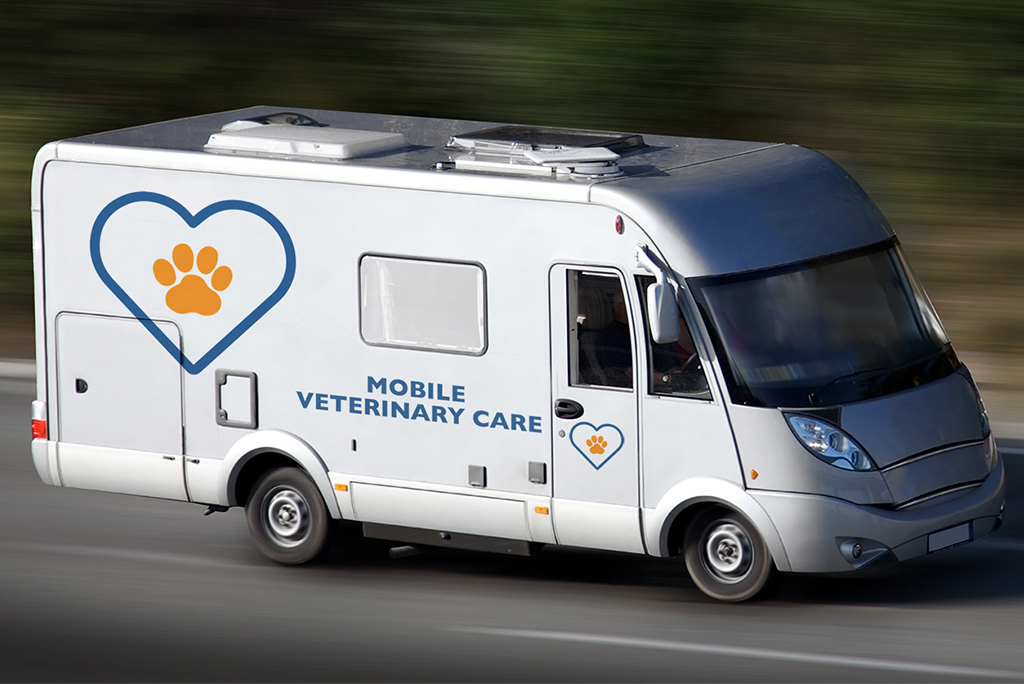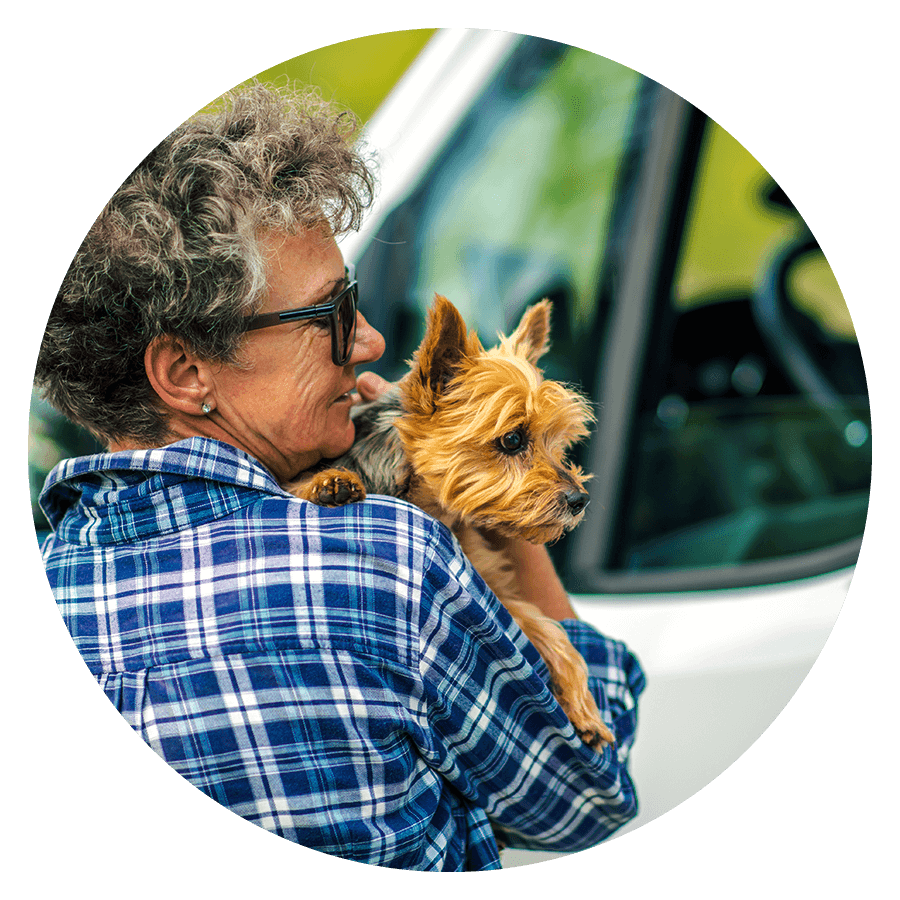To an independent veterinarian, having your own mobile veterinary clinic may sound like an alluring prospect. Imagine being your own boss and creating your own schedule. Having a regular change of scenery from the fluorescent lights of an exam room. Being directly responsible for client relationships with limited staff interaction. Seeing pets in their comfortable home environment.
Sounds pretty awesome, doesn’t it? Beyond these musings though, there’s a lot more to learn about how a mobile veterinary practice works. What is demand like for mobile vets? How do mobile visits differ from office visits? And what can veterinarians expect when running a mobile clinic?
In VitusVet’s July webinar, “How mobile veterinarians use technology to support diverse services and grow client loyalty”, VitusVet Founder and DVM Mark Olcott interviewed 3 mobile veterinarians about their experiences. Here’s what Lisa Aumiller, DVM, of Housepaws Mobile Veterinary Service, Mary Gardner, DVM, of Lap of Love, and Larry Kovac, DVM, of Northland Mobile Veterinary Clinic, had to say about running a mobile vet clinic.

There’s a big market for pet owners who don’t want to go to a stationary vet clinic.
There’s a whole host of reasons why concerned, caring pet owners might not want to take their pet to a stationary veterinary clinic. They could be worried about exposing their pet to other animals that might be sick. Maybe their pet had an extremely traumatic vet experience in the past, or the pet has been so ill-behaved that they are no longer welcome at the clinic. Or a large dog might be very ill, but can’t move on its own – and the owner can’t move it either.
Dr. Aumiller remembers going to a lecture on cat owners and why they don’t go to the vet, before starting her mobile practice. “Once I started mobile, all these cat owners came out of the woodworks saying, ‘I haven’t been to the vet for 15 years and it’s only because it wasn’t worth the trauma and the drama to my cat. I’m thinking now that I can get my cat’s care.’”
Recently, veterinary clinics were closed completely during the coronavirus pandemic lockdown, severely limiting the options for care. Even as lockdowns are lifted, many pet owners prefer to stay at home and receive pet care. And though veterinary clinics are open, they’re not allowing pet owners to come inside. With something as traumatic as euthanasia, pet owners would rather be with their pet as long as possible. “For that last appointment, it’s really hard for the family not to be present,” says Dr. Garder.
Even for more routine pet exams, being able to be near a pet (rather than outside in a car) makes a big difference. “Through the COVID shutdown, I have been able to let clients stand in the doorway, watch what I’m doing, and be with their pet,” says Dr.Kovac. “It’s all about transparency.”
The market for at-home veterinary services translates to high demand, especially for Dr. Gardner of Lap of Love. “We get almost 10,000 calls per week across the entire country,” she says. “We just had three veterinarians start and I honestly need three more tomorrow. We’re having a hard time keeping up.”
Pet behavior changes for the better without the stress of having to leave the house.
Trips to the vet for two different pets can be like night and day. A happy-go-lucky dog may not mind a car ride and an exam much at all, but it’s a totally different story for an extremely anxious cat. And let’s face it: just the frenetic energy of the waiting room could make any normally relaxed pet a bit anxious.
Veterinarians have tried all sorts of tactics to address these issues. Creating separate waiting rooms for dogs and cats, allowing pets to avoid the waiting room and wait in the car, and implementing Fear Free® strategies can all help to ease anxiety.

So what are his secrets to positive pet behavior? For starters, eliminating the fear of a car ride to the vet by turning it into a short stroll. “The walk to my mobile clinic is a lot less stressful than getting in that car,” Dr. Kovac says. “That’s the reason for almost every client that calls me.”
In addition, Dr. Kovac plays music in the clinic, provides lots of peanut butter (mostly for dogs), incorporates Fear Free strategies, and has the owner right there diverting the pet’s attention. For those exceptional pets, he may still have to sedate them, but once he’s finished he can reverse the sedative and the pet can walk out of the clinic.
Mobile vets don’t run into collections issues as frequently as stationary vet clinics do.
Veterinarians know through experience that many of their well-meaning clients just can’t afford the care their pets need. And it’s not just hearsay: according to the American Veterinary Medical Association (AVMA), 20% of pet owners can’t afford pet health care. Almost half of Americans are unable to produce $400 in the event of an emergency. The financial struggle for pet owners is real.
However, Dr. Aumiller finds that regardless of the income level of her clients, they choose to invest in their pet’s health. “We service people who live in trailer parks and in mansions,” Dr. Aumiller says. “The clients that call us want to spend money on their pets. When I worked in a traditional practice, it was more of a mix – people who did and didn’t want to pay.”
In Dr. Aumiller’s mobile practice, 80% of clients pay with a credit card – with the majority of those cards taken in advance. “We are PCI compliant and charge them after the appointment so they don’t have to think about it,” says Dr. Aumiller
Dr. Gardner has a similar experience. Her clinic, Lap of Love, provides hospice and end-of-life care for pets. “Our average client transaction with cremation is about $500,” says Dr. Gardner. “We keep everything very transparent on our website so it’s not sticker shock. We’re priced like an emergency clinic, because we are so last-minute. We don’t have a problem with collections.”
Word of mouth marketing fuels the growth of mobile vet clinics.
Whether you have a freestanding vet practice or a mobile vet clinic, one of the line items in your budget will be for marketing and advertising. This can be anything from signage on your vehicle to flyers in the mail to paid advertising on social media – and the costs can vary greatly.
Clearly, marketing is important: bringing in new clients is critical to keeping your business afloat. However, as a mobile vet, you may not have to spend as much on marketing. According to Dr. Gardner, mobile vet clients will do much of the marketing for you by referring friends and family to your clinic. “Word of mouth is massive,” Dr. Gardner says. “Provide a way for clients to sing your praises and they will do it. We have a testimonial site for our clients and they do the marketing for us.”
Dr. Kovac agrees: he has several hundred 5-star reviews on Google for prospective clients to read through. He’s also got one quite negative review in the mix, but it hasn’t slowed down referrals. When it came out, many of his clients came to his defense and started writing more positive reviews. And it seems people understand it was the exception to the rule: Dr. Kovac frequently gets calls from people who read all the positive reviews – and the negative one – and choose to work with him anyway.
There are some tangible (yet unlikely) benefits to running a mobile vet clinic.
Beyond the allure of running solo outside the confines of an office, there are some really compelling reasons to consider a mobile vet clinic. The market is not limited to just the wealthy; there are numerous groups who would prefer to see a vet at home. During those home visits, pets behave better than they do in the office. Clients are more willing to invest in their pets’ health – and less likely to balk at the price. And by sharing their experiences with others, clients help mobile vets to offset marketing costs.
Make no mistake: there are hurdles to consider. Stay tuned for our next post, where we’ll share insights from these same veterinarians on challenges in running a mobile practice – and how to approach them.
Note: FearFree® is a registered mark of Fear Free, LLC
In VitusVet’s July webinar, “How mobile veterinarians use technology to support diverse services and grow client loyalty”, VitusVet Founder and DVM Mark Olcott interviewed 3 mobile veterinarians about their experiences. Here’s what Lisa Aumiller, DVM, of Housepaws Mobile Veterinary Service, Mary Gardner, DVM, of Lap of Love, and Larry Kovac, DVM, of Northland Mobile Veterinary Clinic, had to say about running a mobile vet clinic.
 by a veterinarian
by a veterinarian


